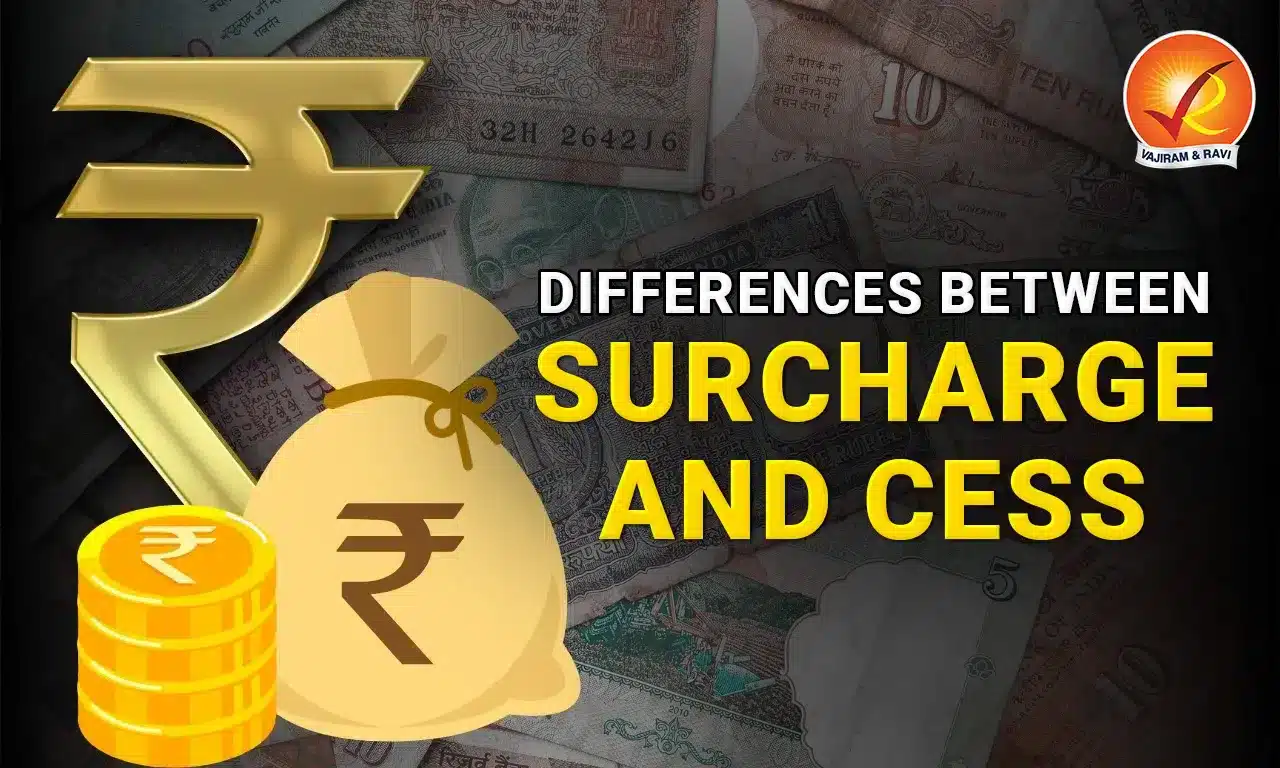Cess and Surcharge are two types of taxes laid down by the Government on the citizens in order to collect revenue for government functioning. Students need to understand the difference between both the taxes for a better understanding of their significance and their functions. In this article, we are going to cover the differences between Cess and Surcharge.
Cess Tax
Cess is a tax applied on a tax. Put simply, the Government of India uses this tax on tax liability, including surcharge, for a very specific purpose. This tax applies to all taxpayers. For example, the government collects cess for the purpose of education. Now this collected cess will be particularly be used for the purpose of education only.
Cess tax is deposited in the Consolidated Fund of India and is applicable for the singular purpose it has been charged for. Once the purpose of Cess Tax is complete, the tax gets dissolved.
Cess Tax Types
There are many types of Cess levied in India. These include:
- Infrastructure Cess on motor cars
- Krishi Kalyan Cess on Service Value
- Swachh Bharat Cess
- Education Cess
- Cess on Crude Oil
- Cess on Exports
- Road and Infrastructure Cess
- Duty on Tobacco and Tobacco Products
- Health and Education Cess on Income Tax
What is Surcharge?
A Surcharge tax is applied on people earning more than Rs. 50 lakhs. Unlike the Cess, the surcharge is not collected for any specific purpose but only for general use by the Government of India. This tax is applicable on the tax payable and not the total income. Surcharge is also collected in the Consolidated Fund of India and used for multiple purposes.
Difference between Cess and Surcharge
Following is the difference between Cess and Surcharge:
| Surcharge | Cess |
|
An additional charge on existing taxes (like income tax). |
A tax levied for a specific purpose (like education, health). |
|
Applied to high-income earners or entities. |
Collected from all taxpayers, as applicable. |
|
Revenues go to the Consolidated Fund of India and can be used for any purpose. |
Ideally earmarked for the specific cause for which the cess is levied. |
|
Example: 10% surcharge on income above ₹50 lakh. |
Example: 4% Health and Education Cess on income tax. |
Similarities between Cess and Surcharge
Cess and Surcharge both are levied by the Central Government and collected in the Consolidated Fund of India. The state government does not get any share in both these taxes.
Last updated on December, 2025
→ Check out the latest UPSC Syllabus 2026 here.
→ Join Vajiram & Ravi’s Interview Guidance Programme for expert help to crack your final UPSC stage.
→ UPSC Mains Result 2025 is now out.
→ UPSC Notification 2026 is scheduled to be released on January 14, 2026.
→ UPSC Calendar 2026 is released on 15th May, 2025.
→ UPSC Prelims 2026 will be conducted on 24th May, 2026 & UPSC Mains 2026 will be conducted on 21st August 2026.
→ The UPSC Selection Process is of 3 stages-Prelims, Mains and Interview.
→ UPSC Result 2024 is released with latest UPSC Marksheet 2024. Check Now!
→ UPSC Toppers List 2024 is released now. Shakti Dubey is UPSC AIR 1 2024 Topper.
→ Also check Best IAS Coaching in Delhi
Difference between Cess and Surcharge FAQs
Q1. What is the difference between cess and tax?+
Q2. What is the difference between a surcharge and a tax?+
Q3. What is education cess and surcharge example?+
Q4. Is Surcharge an indirect tax or direct tax?+
Q5. What is difference between surcharge and cess?+

















